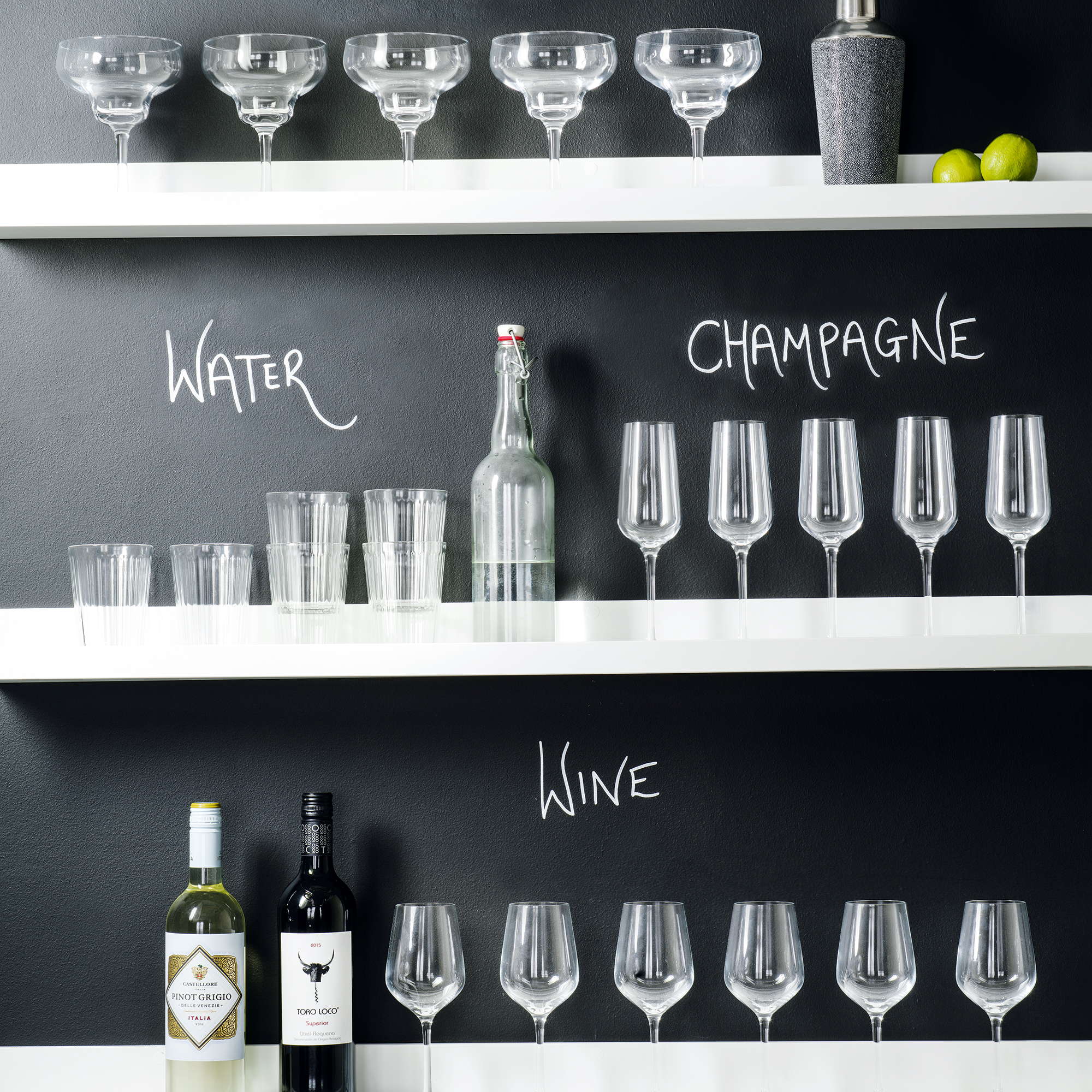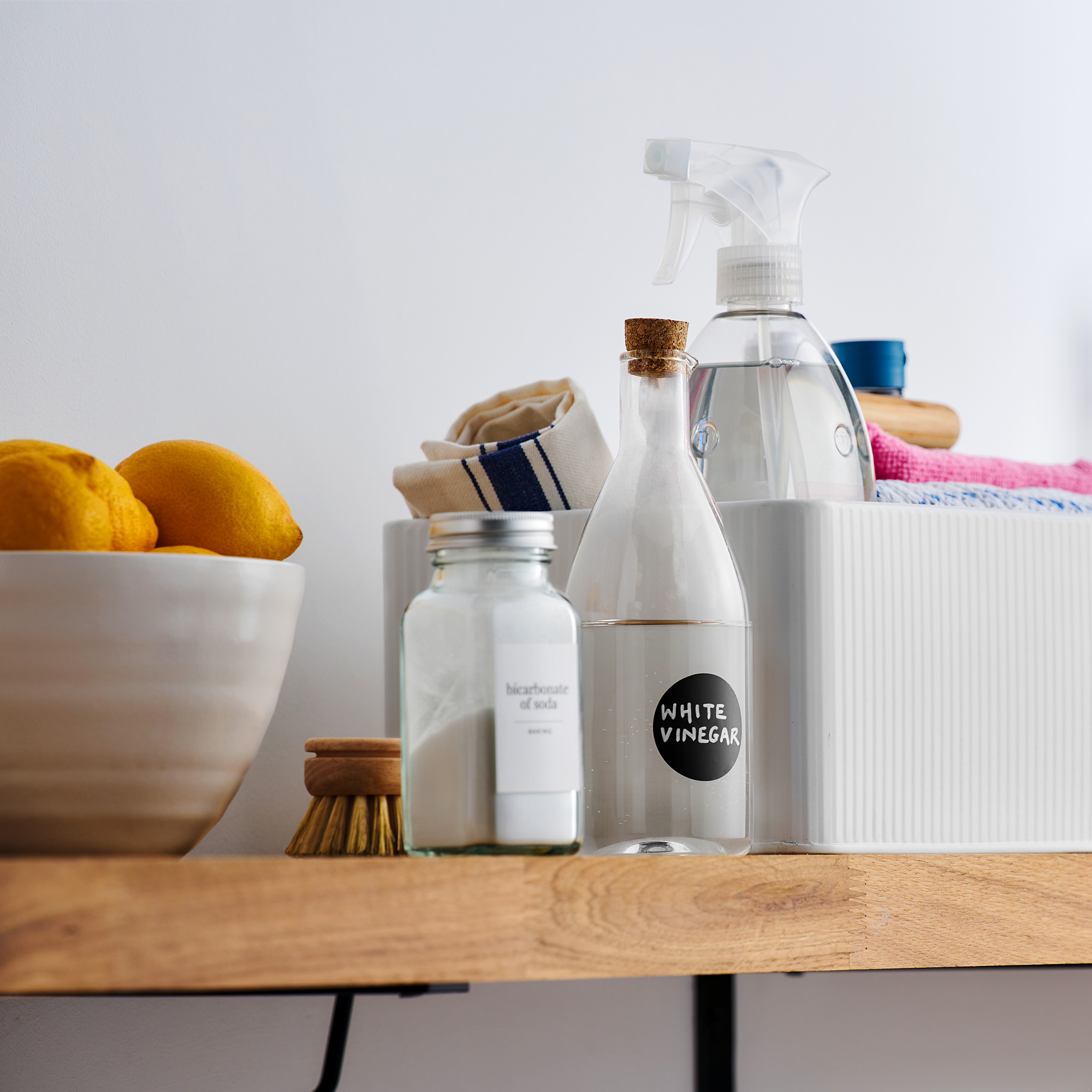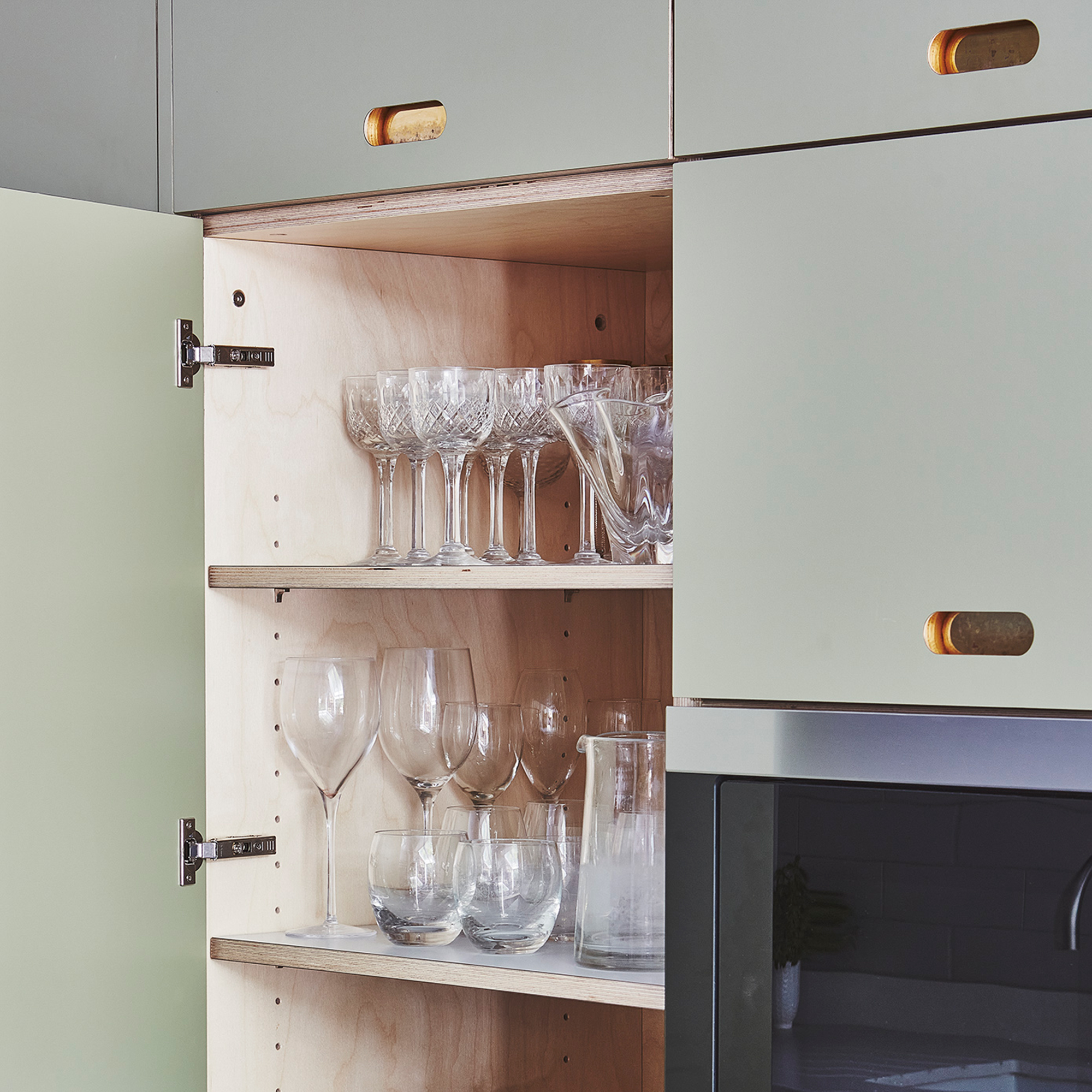
Like most people, you probably clean your drinking glasses after every use. But if you’ve noticed that they’re still cloudy or stained after regular washing, there’s a high chance that you need to know how to clean glasses… properly.
Whether you want to impress your guests with sparkling glasses this Christmas or you want to add an easy task to your 2024 cleaning calendar, giving your glasses a deep clean every now and then is crucial for both hygiene and clarity. But how do you do it exactly?
Well, we’ve asked cleaning experts for their best tips and tricks to ensure every single glass in your kitchen cupboard is clean, cloud-free, and sparkling as bright as they did the day you bought it.
How to clean glasses
‘When washing drinking glasses, handwashing is preferred,' explains Jade Piper, operations manager for BetterCleans.
'Unless specified as dishwasher-safe, handwashing prevents etching or cloudiness on glass which is the last thing you like now that holiday parties are around the corner.' For a detailed step-by-step guide on how to clean glasses, keep reading.
What you’ll need
- White vinegar - like this Hexeal White Vinegar from Amazon
- Baking soda - like this Duzzit Amazing Baking Soda from B&Q
- Washing up liquid - like this Ecover Washing Up Liquid from Amazon
- Bottle brush - like this LoofCo Water Bottle Brush from Lakeland
- Microfibre cloths - like this Pack Of 4 Minky Multi Purpose Cloths from Dunelm
- Warm water
Step-by-step
1. Separate your glasses by type

How many types of glasses do have in your cupboards? You probably have a whole host of different glasses, from regular drinking glasses to glass coffee cups, wine glasses, champagne flutes, tumblers, and more.
And while it may seem practical to clean all of these glasses at the same time, Jade suggests you do the opposite.
‘To make cleaning faster, more convenient, and lessen breakage, separate the glasses first by type (wine, tumblers, delicate). It’s also recommended that you wash in batches for a thorough clean.’
2. Soak in warm, soapy water
When you’ve separated your glasses by type and know which batch you want to clean first, you should then pop them into the sink and soak them in warm, soapy water.
It’s important you get the temperature just right when it comes to this step. Ava Wilson, Chief Editor at Unclutterer, explains, ‘Hot water is more effective at removing grease and stains compared to cold water. However, very hot water can sometimes cause glass to crack, so use warm water instead.’
3. Clean the inside first, then the outside
After five minutes of soaking time, you can then get your hands dirty. But while you might assume that this step is simple, cleaning the glasses is a little more complicated than you think.
Jade says, ‘Using that soapy water, hold glasses by their sturdier parts like the base or stem, and carefully wash each glass inside first then the outside to prevent transferring dirt back into the glass. Focus on areas like the rims and bases where buildup commonly occurs and refresh the soapy water if it gets cloudy or too soiled to prevent smudges.’
You can either use a microfibre cloth or a sponge for this step, but you should always make sure that you use a gentle tool that won’t leave any fluff or debris behind during the cleaning process.

4. Use a bottle brush to clean narrow glasses
You should be able to use a cloth or sponge to clean tumblers and smaller drinking glasses, but cleaning narrow-necked glassware can sometimes pose a problem. And if you want a thorough clean, you need to find a way to get all the way down to the bottom.
For this step, investing in a bottle brush with soft bristles could be your best bet. This will allow you to clean the inner base of the glass without using too much force and without getting your hand stuck in the glass!
5. Rinse under clean, warm water
When you’re confident that you’ve cleaned both the inside and the outside of the glasses with soapy water, you should then rinse them all under clean, warm water. You should do this until there’s no soap left to prevent soap stains or a soapy taste when you next drink out of them.
6. Soak in white vinegar if needed

If you live in a hard water area, you’ll know the impact this can have on your home essentials. Not only can it result in limescale buildup in your kettle, but it can also have an impact on your drinking glasses. In fact, if you have cloudy glasses, there’s a high chance that hard water is the culprit.
‘Cloudiness can be caused by hard water deposits,’ explains Ava. ‘Soak glasses in a mixture of white vinegar and water (equal parts) for an hour, then wash as usual.’
Of course, this step isn’t necessary if you live in a soft water area and don’t have cloudy glasses. But if you have particularly hard water that leaves mineral marks and stubborn spots even after cleaning, you could also add some baking soda into the mix.
All you have to do is create a paste of water and baking soda, dab it onto your finger, and gently wipe at the dirty areas. Just make sure that you don’t use too much baking soda, as this mild abrasive could scratch your glasses if you’re not careful.
7. Ideally, air-dry your glasses
Next, you have a choice to make. While you could immediately grab your tea towel and dry your glasses, experts consider it better to let your glasses air dry.
Jade says, ‘You can air dry them on a rack, which can minimise contact and potential contamination. If you do prefer to airdry, never do it in direct sunlight because UV rays can cause glasses to cloud and discolour over time.’
It just so happens that Ava agrees, but she does understand that some people don’t have the space to dry all of their glasses on their kitchen countertop. So, she’s offered a solution.
‘Air drying is generally best to prevent lint or residue from towels. If you need to dry them by hand, use a lint-free cloth or a microfibre towel. Ensure the towel is clean and hasn’t been used with other cleaning products that could leave a smell or residue.’
8. Store them properly

We’ve long debated the correct way to store glasses in a cupboard, and the answer to that debate is even more important when you’ve just cleaned your glasses. The last thing you want is for them to get dirty again, which is why you need to store them properly.
Ava suggests, ‘Store glasses upright in a clean, dust-free cabinet. If storing glasses for an extended period, consider placing a paper towel inside each to absorb any odours and prevent dust accumulation.’
FAQs
What is best for cleaning drinking glasses?
Warm, soapy water will often be all you need to clean drinking glasses, but it’s important to do this properly. For starters, you need to let them soak in the soapy water for a few minutes before cleaning them.
Then, you need to clean the inside first before tackling the outside, as you don’t want to wipe any dirt or debris from the outside onto the inside again.
Finish by letting your glasses air dry, as using a cloth or tea towel can often contaminate them or leave them covered in fluff.
If you have any stubborn hard water stains, consider soaking them in white vinegar for half an hour.
What removes hard water stains from drinking glasses?
Hard water can often leave mineral deposits and stains on drinking glasses, but they can easily be removed. All you need to do is soak your glasses in equal parts water and white vinegar for half an hour.
If the stains are particularly stubborn, you could create a loose paste of baking soda and water and dab it onto your finger. Then, gently rub your finger over the stains to disturb the minerals before washing with warm soapy water and rinsing.
Cloudy glassware, be-gone!







